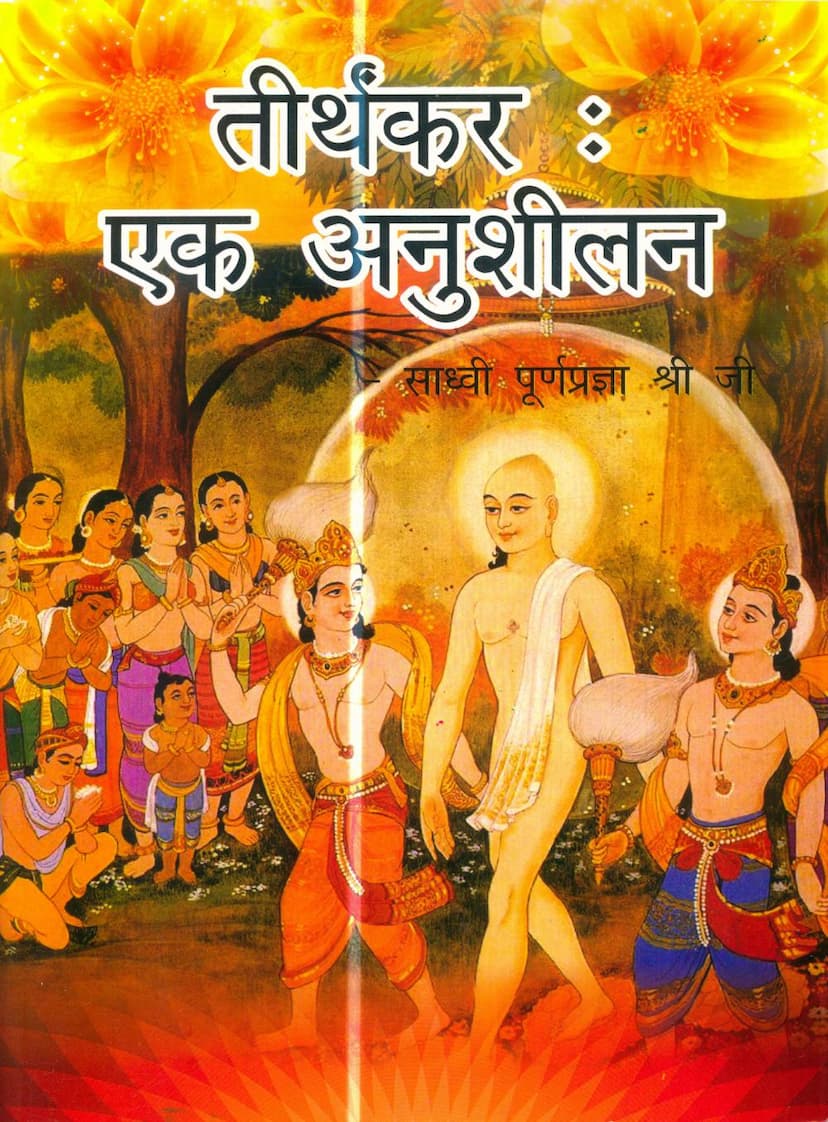Tirthankar Ek Anushilan
Added to library: September 2, 2025

Summary
This book, "Tirthankar: Ek Anushilan" (Tirthankar: A Study), authored by Sadhvi Purnapragyashreeji and Himanshu Jain, delves deeply into the concept of Tirthankaras within Jainism. The book aims to provide comprehensive knowledge about these spiritual luminaries, who are considered the fathers of the Jain faith and the most virtuous souls in the universe.
The text is structured to answer fundamental questions that arise in the minds of many, particularly the youth, about Tirthankaras:
- Who are Tirthankaras?
- How do they attain this status?
- What are their lives like?
- How are they beneficial to us?
- Why are they worthy of veneration and praise?
The book systematically explores various aspects of Tirthankaras, including:
- The meaning and significance of the term 'Tirthankar'. It analyzes the word's origin and its multifaceted meaning, connecting it to the concepts of "tirth" (a holy place or a path to salvation) and "kar" (creator or establisher).
- The process of becoming a Tirthankar. This section details the 'Tirthankar Namkarma' and the rigorous spiritual practices and vows required to attain this high status, highlighting the twenty specific virtues or 'dwara' that lead to this.
- The origins and numbers of Tirthankaras. It discusses where and when Tirthankaras are born, their typical lineage (Kshatriya), and the count of Tirthankaras in different time cycles and regions according to Jain cosmology.
- The 'Kalyanaks' (auspicious events) of Tirthankaras. The book elaborates on the five significant life events of a Tirthankar: Chyavan (descent into the womb), Janma (birth), Diksha (initiation), Kevalgyan (omniscience), and Nirvana (liberation). It details the celestial celebrations and rituals associated with these events, including the roles of deities and the unique characteristics of these occasions.
- The physical and spiritual attributes of Tirthankaras. This includes descriptions of their divine physical form, immense strength, special virtues, and the 34 specific 'atishayas' (supernatural powers or signs of perfection) and 35 'vachanamishayas' (qualities of speech) that distinguish them.
- The distinction between Tirthankaras and other enlightened souls. The book clarifies the difference between ordinary Kevalis (omniscient beings) and Tirthankar Kevalis, emphasizing the Tirthankaras' unique role in establishing the Jain spiritual order.
- The concept of 'Tirth' itself. It explains the dual meaning of 'tirth' as both the 'Chastushk Sangh' (four-fold community: monks, nuns, laymen, and laywomen) and the spiritual teachings ('pravachan' or 'shruta' knowledge).
- Tirthankaras in Jain scriptural literature. The text references various Jain scriptures and texts where Tirthankaras are discussed, highlighting their importance in devotional literature.
- The historical and cultural context of Tirthankaras. The book touches upon the historical existence of Tirthankaras, referencing their mention in other ancient traditions, and discusses the cultural significance of their teachings.
- The concept of 'Avatar' vs. 'Tirthankar'. It clearly differentiates the Jain concept of Tirthankaras from the idea of 'avatars' in other religions, emphasizing the Jain emphasis on self-effort and the attainment of liberation through one's own karma and spiritual progress ('uttarvad' or 'ascension' rather than 'avatarvad' or 'descent').
- The birthplaces and timing of Tirthankaras. It provides details about the 'karma-bhumis' (lands of action) and 'arya-deshas' (sacred lands) where Tirthankaras are born, and the specific periods within the Jain time cycles when they appear.
- The number 24 and its significance. The book explores why there are 24 Tirthankaras in each cycle, attributing it to the natural rhythm of cosmic time and the confluence of specific astrological and spiritual conditions.
- The role of Yaks and Yakshinis. It explains the function of these guardian deities associated with Tirthankaras.
- The significance of Tirthankara iconography. The text delves into the meaning behind the symbols ('laanchhans') associated with each Tirthankar and the significance of serpent hoods ('phanas') in the iconography of specific Tirthankaras like Suparshvanatha and Parshvanatha.
- The practice of idol worship ('Pratima Pujan'). It validates and explains the importance of worshipping Tirthankara images as a means of connecting with their divine presence and strengthening one's spiritual path.
- The philosophy of meditation and mantras related to Arhats. The book discusses the practices of meditation and the power of mantras like 'Namah Arhatanam' for spiritual upliftment and karma mitigation.
- The discipline and conduct ('Kalpa') followed by monks and nuns. It outlines the different sets of rules and practices ('kalpas') that vary for ascetics depending on the specific Tirthankara's era and the prevalent societal conditions.
- The importance of following the teachings of Tirthankaras ('Jinasasana'). The book underscores that the ultimate goal is to embody the virtues of the Tirthankaras through their teachings and the Jain way of life.
In essence, "Tirthankar: Ek Anushilan" serves as a comprehensive guide for understanding the profound role and unparalleled significance of Tirthankaras in the Jain tradition, providing detailed insights into their lives, teachings, and the spiritual journey they embody. The author, Sadhvi Purnapragyashreeji, draws upon various Jain scriptures and commentaries to compile this extensive study, aiming to illuminate the path of these supreme beings for the benefit of all seekers.